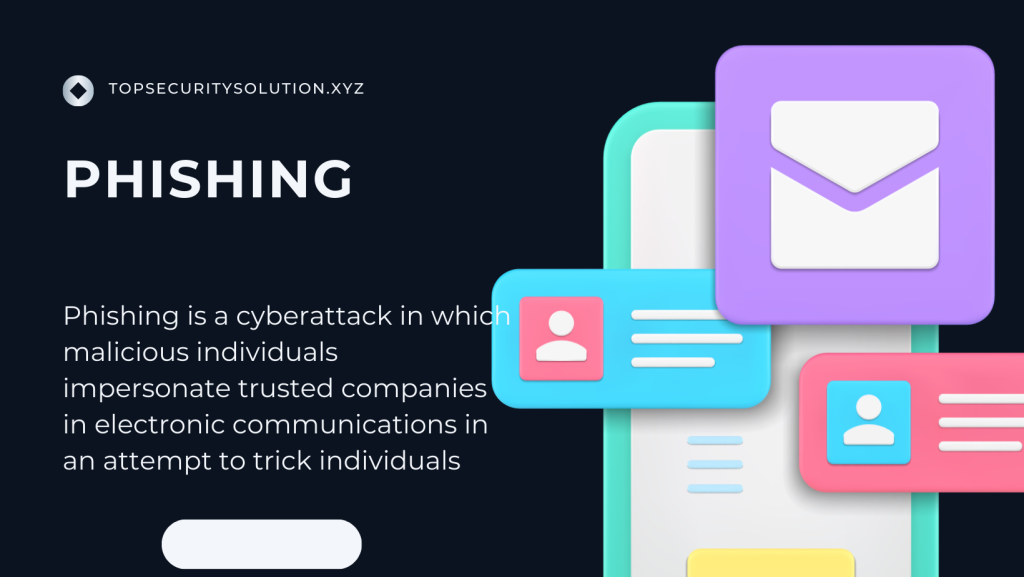what is Phishing?

Phishing
Phishing is a type of cyber assault wherein malicious human beings impersonate a valid entity (such as banks, social media systems, or government corporations) to trick people into revealing touchy information including passwords, credit card numbers , or reveal private information. These frauds typically take the shape of e-mail , via electronic communications such as text messaging, or immediately messaging, wherein the attacker tries to control the recipient into clicking malicious links, downloading dangerous attachments, or posting non-public data.
Definition of phishing
Phishing is a cyberattack in which malicious individuals impersonate depended on businesses in electronic communications in an try to trick people into revealing touchy statistics inclusive of passwords, credit card numbers, or different private information.
Types of phishing:
Email phishing:
The most common, in which attackers send emails that appear to return from valid sources (along with banks, government businesses, or depended on agencies) to trick recipients into clicking a link terrible kinds or offer confidentiality.
Spear phishing:
Targeted phishing wherein attackers tailor their messages to specific people or companies, regularly the use of non-public facts amassed from social media or other assets to growth credibility.
SMS/Text Message Phishing:
Similar to e mail phishing, however accomplished through SMS or textual content messages, wherein recipients are asked to click on on links or offer statistics through textual content message.
Voice Phishing (Vishing):
Telephones are regularly used to provide touchy facts over the cellphone fraudulently impersonating legitimate agencies or authorities corporations.
Phishing attacks
These are often utilized in phishing emails or messages to trick recipients into clicking malicious links or downloading harmful attachments.
Let’s smash down how these may be used in a phishing assault:
Speed Check / Internet Speed Test:
Phishing emails can falsely declare to provide a link to test net velocity or perform a pace test. The goal of this application is to trick recipients into clicking at the link, probably leading to a malicious internet site that attempts to steal login credentials or set up malware on the person’s tool.
Fapelo:
This could be a play on words related to “phishing.” Phishers regularly create valid web sites or domain names masquerading as legitimate websites. For instance, a internet site can be created with a site name like a famous service like PayPal (“Fapello” in preference to “PayPal”). Users unknowingly input their login credentials, which might be then retrieved by way of the phishers.
Email:
Email phishing is one of the most common techniques. Attackers send emails that appear to come from a valid supply, which includes a financial institution, social media platform, or internet service company. These emails often incorporate pressing requests for account updates or prizes, with links to fake login pages designed to collect person credentials.
Routers:
Phishing assaults can also goal routers and different community gadgets. Attackers can ship emails impersonating the consumer’s Internet Service Provider (ISP) or router producer, asking customers to update firmware or click on on links to check structures those links can cause faux websites that masquerade as a router’s login web page, designed to scouse borrow router credentials or set up malware.
Threats:
Financial loss:
If attackers benefit get entry to to their financial institution accounts or use their credit score card statistics, victims can lose money without delay. Companies also can face monetary losses due to fraud losses or felony prices.
Identity theft:
Phishing attacks often goal non-public records that can be impersonated or received get entry to to their money owed, resulting in identification theft This can lead to credit score rating harm, unauthorized purchases, or fraud in the name of the victim.
Malware distribution:
Some phishing assaults include hyperlinks or attachments that installation malware on a victim’s device when clicked or downloaded. This malicious malware can compromise tool protection, steal extra information, or be used to attack the sufferer’s network again.
Data robbery:
The intention of a phishing assault is to thieve touchy statistics which includes usernames, passwords, credit card facts, and personally identifiable records. This information robbery may be used for identity robbery, financial fraud, or dark net sales.
Effects:
Loss of statistics privacy:
Individuals can experience a loss of privacy while their private facts is uncovered through a phishing attack. This can create ongoing risks of fraud and identification robbery.
Disruption of commercial enterprise operations:
Phishing assaults on agencies can disrupt operations, particularly if vital structures are compromised or employees fall victim to assaults that spread malware or ransomware.
Financial Impact:
Individuals and organizations can lose cash due to unauthorized transactions, fraudulent sports, legal costs and fees related to convalescing from phishing assaults.
CLICKS THE LINK BELOWTypes of phishing:
see the links below
https://topsecuritysolutions.xyz/index.php/2024/07/21/phishingandattacks/